- Published 17 Jan 2023
- Last Modified 29 Aug 2023
- 8 min
A Complete Hose Connector Guide
Everything you need to know about the different hose connector types, where to use them, and which is best.

This handy guide will explain everything you need to know about hose connectors, including what they are, how to use them, the different types available, and where to buy the right hose connector for your equipment.
What is a Hose Connector?
Hose connectors are couplings used to securely and robustly attach hoses to water and pressurised air outlets of various types. They are highly versatile, used in commercial, industrial and domestic settings. The media passing through them could be solid (flour, sugar, etc), liquid (including chemicals and hydraulic oils), or gas (including compressed air).
Hose connectors have a range of alternative names, including:
- Fittings
- Adapters
- Tap connectors
- Pipe connectors
- Couplings
- Joiners
- Quick connect couplings
They form part of the wider category of pipes, tubing and hoses, and hydraulic fittings and tubing.
Different Types of Hose Connector

Like similar devices, hose connector designs are conventionally allocated two genders – male and female – in reference to the way they attach to the hose or each other whilst in use. This can be through insertion (male) or encirclement (female).
Both hose connector genders have different subtypes. Female hose connectors are available in both male-to-female and female-to-female designs, along with a double-female design for simultaneous attachment to two compatible connectors. Male hose connectors also come in male-to-female and male-to-male varieties.
Within this broad binary, there are multiple designs with specific uses and features, including adjustable nozzles, adapters, inserts, and valves. A comprehensive range of liquid pressures is also available, ranging from 4.2 bar up to 390 bar.
Let’s take a look at these different types of hose connectors in more detail.
Air Hose Connectors
Air hose connectors provide tight and reliable seals for attaching high-pressure hoses to air pumps, brakes, and breathing tanks.
Water Hose Connectors
The water or liquid hose is used in both familiar domestic settings like back gardens, as well as a wide variety of commercial and industrial environments, primarily for cooling and cleaning purposes. While a leaking garden hose may not provide too much of a problem, leakage in a factory is potentially dangerous so the connectors used must provide a tight and reliable seal.
Hydraulic Hose Connectors
Hydraulic hose connectors are fittings designed to connect hoses to various components used within hydraulic systems. This could include valves, cylinders, or pumps. Highly secure, hydraulic hose fittings offer tightly-sealed connections, preventing leakage, maintaining a safe operational level of pressure, and directing the flow of hydraulic fluid within the system.
Brass Hose Connectors
Brass hose connectors make a good choice for low-pressure hosing and are often used with domestic garden watering equipment as well as fuel lines. Brass is resistant to corrosion and pliable but strong. However, it is important to ensure that only quality brass has been used in the manufacturing process as cheaply-made brass can be weak and porous.
Aluminium Hose Connectors
Aluminium is a notably light metal – only around two-thirds the weight of steel or brass with the same mass. This makes it a great choice for larger connectors used within industrial settings. It is also highly resistant to corrosion, pliable, and less expensive than steel alternatives.
Steel Hose Connectors
Carbon steel is a blend of steel and carbon. When properly treated, carbon steel is stronger than the regular alternative, although less pliable. Varying the blend of carbon and steel provides different strengths and levels of resistance to corrosion. Hose connectors made from carbon steel are widely used within industrial environments because they can withstand high pressures.
Stainless Steel Hose Connectors
Stainless steel is an alloy of steel and chromium, highly resistant to rust and other corrosive agents such as saltwater and spray. It is also suitable for use with very high-pressure liquids. Its principal disadvantage is the price – stainless steel hose connectors can cost several times as much as those made from regular carbon steel.
Plastic Hose Connectors
Some domestic hose connectors are made from a type of plastic called polyamide. It is inexpensive, highly versatile, and perfectly adequate for low-pressure domestic use.
Hose Connectors by Thread Type
Before we explore the different types in greater detail, we should first mention that universal hose connectors do not feature threading. As a result, they will fit most standard taps. They make use of a tightening mechanism but cannot provide the secure, water-tight seal of threaded connectors.
There are three key types of hose connector threading:
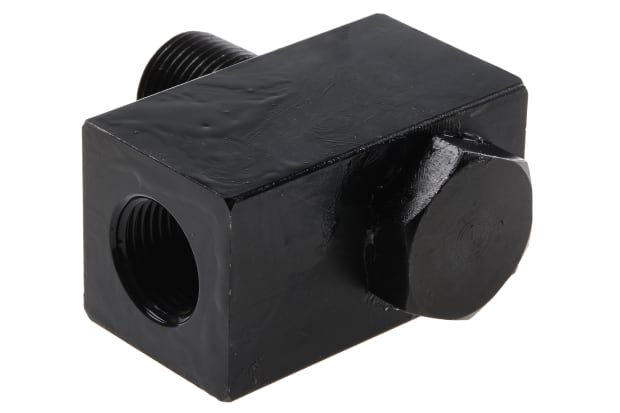
NPT Hose Connectors
A National Pipe Thread Connection features a tapered 60° thread. Male and female NPT connectors slot together to create a solid seal.
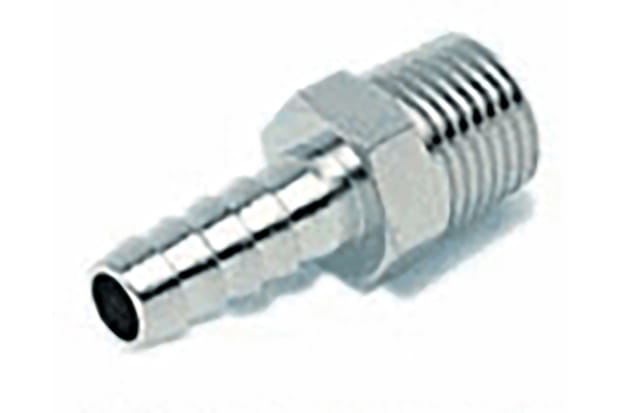
BSPT Hose Connectors
The British Standard Pipe Thread has a connection angle of 55° but is otherwise very similar to NPT connectors and will fit them, albeit without creating a solid seal.
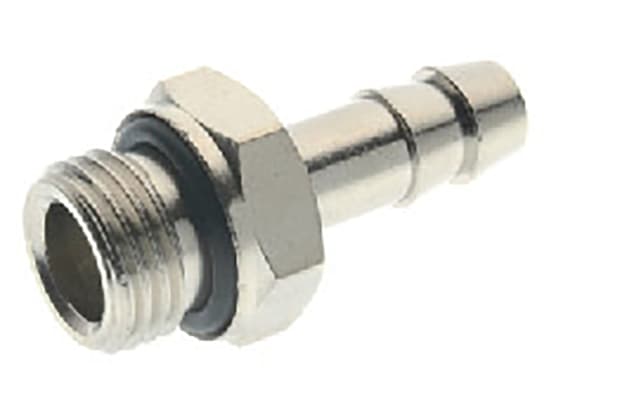
BSPP Hose Connectors
The British Standard Parallel Pipe thread features parallel grooves. When combined with a seal ring, a male and female BSPP connector will form a solid seal along the thread. The seal ring is placed between the shoulder of the male connector and the face of the female connector.
What are Hose Connectors Used for?
Hose couplings and connectors are used whenever a hose needs to be firmly attached to a liquid, air, or even moving granulated solids like flour, wheat, or sugar. Typical examples might include:
- Pumps
- Kitchen or external taps for watering greenery and gardens
- Water sprinklers
- Pressure washers
- Industrial water guns
- Spigots
- Heating, ventilation, and air conditioning systems
- Industrial cooling systems
- Ink transfer systems within the printing industry
- Bulk transfer of granular particles
In addition, two lengths of hose can be joined via a double-ended connector to:
- Extend a length of hose an additional distance
- Divert water flow in two directions
- Repair damaged hosing (performing a similar function to hose protectors)
How to Choose the Right Hose Connector
The type of hose connector you should buy depends on your particular requirements. Before purchasing, you should determine the following factors:
- Required diameter (determined by the diameter of the hose)
- Required pressure tolerance
- Whether the connector will be channelling water, air, or a different liquid
- Whether you need an automatic shut-off for accidental or deliberate pipe removal
- Whether the media passing through will be chemically compatible
Hose Connector Choices by Size
Hose connectors fall into three broad sizes – mini, small, and large. These measurements refer to the width of the diameter’s central tube and run from half an inch (0.53 inches) up to 50mm (2.01 inches). The following inner diameters are relatively common:
- 15mm (0.59 inches)
- 19mm (three-quarters of an inch)
- 25.4mm (one inch)
Compare Hose Connectors
Hose connectors are typically made from carbon steel, stainless steel, plastic, or brass. These materials each have different qualities and strengths.
See the following examples:
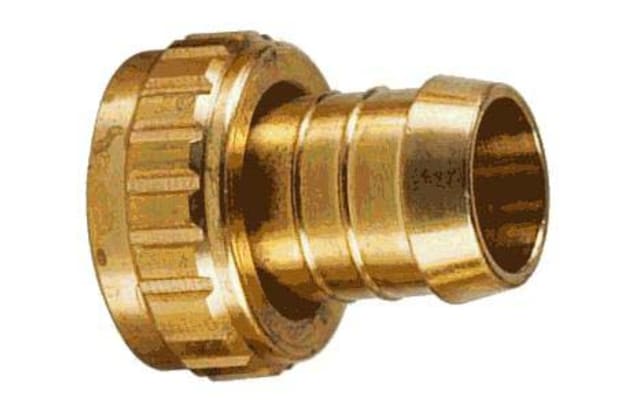
- Gender: Female
- Material: Brass
- Typical Applications: Pressured flows
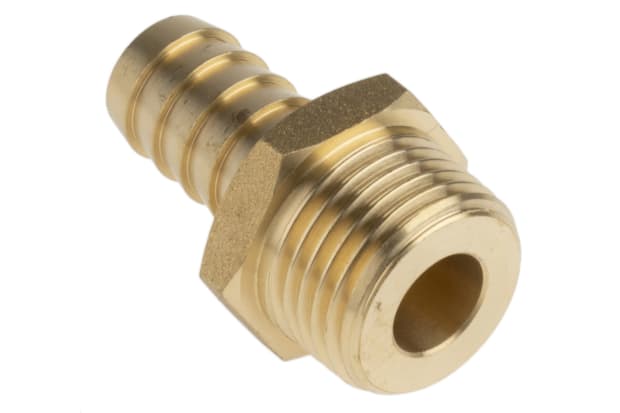
- Gender: Male
- Material: Brass
- Typical Applications: Water and power plants
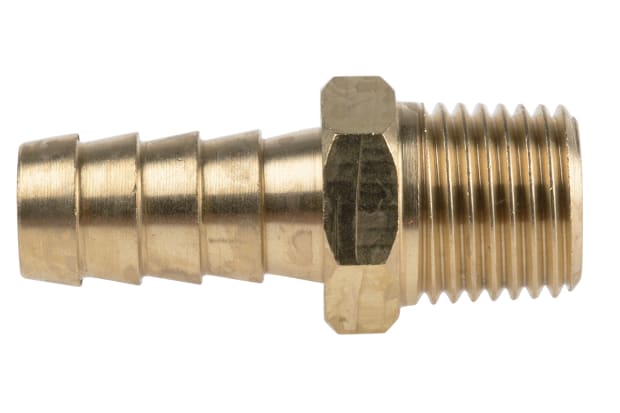
- Gender: Male
- Material: Brass
- Typical Applications: Heating, ventilation and air conditioning (HVAC) systems
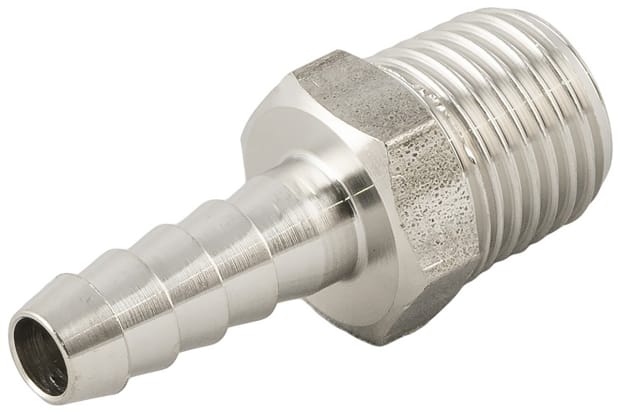
- Gender: Male
- Material: Stainless steel
- Typical Applications: Industrial water guns
FAQs
What are Hose Connectors Made of?
Hose connectors are available in a variety of materials including stainless steel, standard or carbon steel, brass, aluminium, and polyamide (plastic).
What Size is a Standard Hose Fitting?
There is no standard size because there is no singular standard use for hose connectors. They are connected to different-sized devices for varying tasks, in many environments. You should start by considering the specifics of the task at hand then select the right size connector.
How Do Hose Connectors Work?
Hose connectors work by creating a water or airtight seal, normally via a carefully-calibrated combination of threading and metal tubing.
How Do You Fit a Hose Connector?
In most cases, the process is a straightforward one:
- Ensure that the end of the hose to be attached is neatly cut
- Unscrew the sealing cap from the connector and pass this over the end of the hose
- Firmly screw or slide the connector onto the hose
- Slide the sealing cap back up the hose and onto the cap, screwing it back into place. This will push the spokes around the end of the connector into the hose, creating a firm connection
- Connect your tap, hose, nozzle, or other attachment to the connector and use
Can You Connect Two Hoses Together?
Yes, this is a routine function of hose connectors. They can be connected to provide additional length, alter the direction of liquid flow, and repair breaks. Simply ensure that the connectors fitted to each end of the hoses are compatible with each other (e.g. female to male).
Do You Need a Hose Connector?
Yes. Without a solid seal created by a hose connector, it would be impossible to connect one liquid or air-bearing device to another without significant and potentially highly hazardous leakage.
Are All Hose Connectors the Same?
No, they come in a variety of designs and sizes for different tasks. For example, there are male and female connectors, terms that refer to the way they attach to other hoses or connectors. Other designs include nozzles, valves, varying pressure tolerances, and adapters for use in a multitude of specific circumstances.